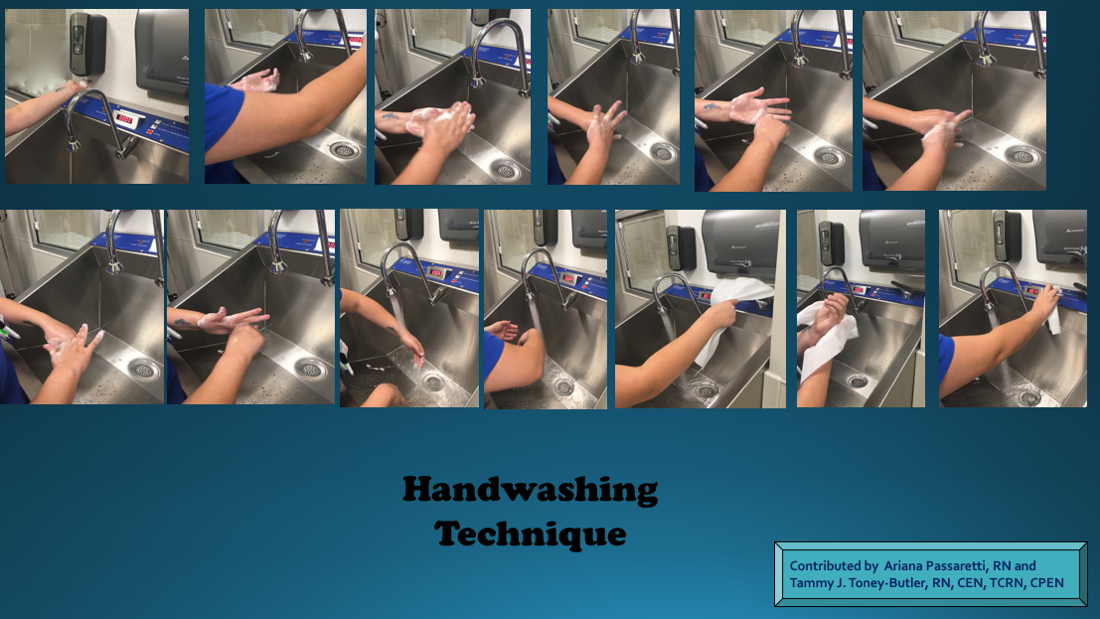[1]
Hassan MZ, Chowdhury MAB, Hassan I, Chowdhury F, Schaefer N, Chisti MJ. Respiratory viral infection in early life and development of asthma in childhood: A protocol for systematic review and meta-analysis. Medicine. 2019 May:98(18):e15419. doi: 10.1097/MD.0000000000015419. Epub
[PubMed PMID: 31045799]
Level 1 (high-level) evidence
[2]
Gammon J, Hunt J. The neglected element of hand hygiene - significance of hand drying, efficiency of different methods and clinical implication: A review. Journal of infection prevention. 2019 Mar:20(2):66-74. doi: 10.1177/1757177418815549. Epub 2018 Dec 5
[PubMed PMID: 30944590]
[3]
McMichael C. Water, Sanitation and Hygiene (WASH) in Schools in Low-Income Countries: A Review of Evidence of Impact. International journal of environmental research and public health. 2019 Jan 28:16(3):. doi: 10.3390/ijerph16030359. Epub 2019 Jan 28
[PubMed PMID: 30696023]
[5]
Pittet D. Improving compliance with hand hygiene in hospitals. Infection control and hospital epidemiology. 2000 Jun:21(6):381-6
[PubMed PMID: 10879568]
[6]
Hoang D, Khawar N, George M, Gad A, Sy F, Narula P. Video didactic at the point of care impacts hand hygiene compliance in the neonatal intensive care unit (NICU). Journal of healthcare risk management : the journal of the American Society for Healthcare Risk Management. 2018 Apr:37(4):9-15. doi: 10.1002/jhrm.21314. Epub 2018 Feb 6
[PubMed PMID: 29405485]
[7]
Kampf G, Kramer A. Epidemiologic background of hand hygiene and evaluation of the most important agents for scrubs and rubs. Clinical microbiology reviews. 2004 Oct:17(4):863-93, table of contents
[PubMed PMID: 15489352]
[8]
Kapil R, Bhavsar HK, Madan M. Hand hygiene in reducing transient flora on the hands of healthcare workers: an educational intervention. Indian journal of medical microbiology. 2015 Jan-Mar:33(1):125-8. doi: 10.4103/0255-0857.148409. Epub
[PubMed PMID: 25560015]
[9]
Biezen R, Grando D, Mazza D, Brijnath B. Visibility and transmission: complexities around promoting hand hygiene in young children - a qualitative study. BMC public health. 2019 Apr 11:19(1):398. doi: 10.1186/s12889-019-6729-x. Epub 2019 Apr 11
[PubMed PMID: 30975108]
Level 2 (mid-level) evidence
[10]
Kang YS, Chang YJ. Using a motion-controlled game to teach four elementary school children with intellectual disabilities to improve hand hygiene. Journal of applied research in intellectual disabilities : JARID. 2019 Jul:32(4):942-951. doi: 10.1111/jar.12587. Epub 2019 Apr 2
[PubMed PMID: 30941883]
[11]
Le CD, Lehman EB, Nguyen TH, Craig TJ. Hand Hygiene Compliance Study at a Large Central Hospital in Vietnam. International journal of environmental research and public health. 2019 Feb 19:16(4):. doi: 10.3390/ijerph16040607. Epub 2019 Feb 19
[PubMed PMID: 30791457]
[12]
Korhonen A, Vuori A, Lukkari A, Laitinen A, Perälä M, Koskela T, Pölkki T. Increasing nursing students' knowledge of evidence-based hand-hygiene: A quasi-experimental study. Nurse education in practice. 2019 Feb:35():104-110. doi: 10.1016/j.nepr.2018.12.009. Epub 2019 Jan 2
[PubMed PMID: 30772734]
[13]
Yap M, Chau ML, Hartantyo SHP, Oh JQ, Aung KT, Gutiérrez RA, Ng LC. Microbial Quality and Safety of Sushi Prepared with Gloved or Bare Hands: Food Handlers' Impact on Retail Food Hygiene and Safety. Journal of food protection. 2019 Apr:82(4):615-622. doi: 10.4315/0362-028X.JFP-18-349. Epub
[PubMed PMID: 30907665]
Level 2 (mid-level) evidence
[14]
Mutters R, Warnes SL. The method used to dry washed hands affects the number and type of transient and residential bacteria remaining on the skin. The Journal of hospital infection. 2019 Apr:101(4):408-413. doi: 10.1016/j.jhin.2018.12.005. Epub 2018 Dec 8
[PubMed PMID: 30537524]
[15]
. WHO Guidelines on Hand Hygiene in Health Care: First Global Patient Safety Challenge Clean Care Is Safer Care. 2009:():
[PubMed PMID: 23805438]
Level 3 (low-level) evidence
[16]
Alothman A. Infection control and the immunocompromised host. Saudi journal of kidney diseases and transplantation : an official publication of the Saudi Center for Organ Transplantation, Saudi Arabia. 2005 Oct-Dec:16(4):547-55
[PubMed PMID: 18202509]
Level 3 (low-level) evidence
[17]
Widmer AF, Rotter M, Voss A, Nthumba P, Allegranzi B, Boyce J, Pittet D. Surgical hand preparation: state-of-the-art. The Journal of hospital infection. 2010 Feb:74(2):112-22. doi: 10.1016/j.jhin.2009.06.020. Epub 2009 Aug 28
[PubMed PMID: 19716627]
Level 3 (low-level) evidence
[18]
Tanner J, Dumville JC, Norman G, Fortnam M. Surgical hand antisepsis to reduce surgical site infection. The Cochrane database of systematic reviews. 2016 Jan 22:2016(1):CD004288. doi: 10.1002/14651858.CD004288.pub3. Epub 2016 Jan 22
[PubMed PMID: 26799160]
Level 1 (high-level) evidence
[19]
Suen LKP, So ZYY, Yeung SKW, Lo KYK, Lam SC. Epidemiological investigation on hand hygiene knowledge and behaviour: a cross-sectional study on gender disparity. BMC public health. 2019 Apr 11:19(1):401. doi: 10.1186/s12889-019-6705-5. Epub 2019 Apr 11
[PubMed PMID: 30975130]
Level 2 (mid-level) evidence
[20]
Guo N, Ma H, Deng J, Ma Y, Huang L, Guo R, Zhang L. Effect of hand washing and personal hygiene on hand food mouth disease: A community intervention study. Medicine. 2018 Dec:97(51):e13144. doi: 10.1097/MD.0000000000013144. Epub
[PubMed PMID: 30572426]
[21]
Gomez NJ. Hand Washing Adherence - Is That Really Our Goal? Nephrology nursing journal : journal of the American Nephrology Nurses' Association. 2018 Jul-Aug:45(4):393-394
[PubMed PMID: 30303649]

